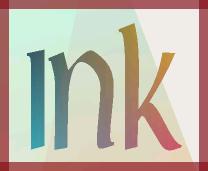|
SCOUG OS/2 For You - Dec 1999
One of my pet peeves with software (not just OS/2 stuff) is that no one believes in manuals anymore. I don't know whether the profit margins are just too slim, there's a dearth of tech writers, or that everyone noticed that Microsoft could get away with it -- making people buy the 3rd party books that used to be the manuals. And unless your software sells in the hundreds of thousands of copies, no one is going to publish your manual even if you write one. Grrh! Anyhow, what you actually get with your new bought software is on line documentation (an HLP file) and maybe, just mabye, a viewable OS/2 INF file. Well, I'm sorry, but I just gotta have my hard copy doc fix, because a lot of this software may be intuitive to the programmer who wrote it, but it sure as heck is not intuitive to me. Printing out those HLP and INF files just isn't practical, because on line documentation is designed for hyper linking, not reference surfing. I don't know about you, but I've tried to print out INF files and wound up with tons of mostly blank paper. Simply not useful. And until and unless vendors start shipping tutorial documentation and electronic manuals in Adobe PDF format, you and I are SOL. I have quite a bit of software that I don't use because I tired it, found it counter intuitive, and just don't have the time to mess around with it (for example, currently Maul Publisher). So, I'm going to share with you my personal solution, which involves some shareware/freeware, some inexpensive software, and a little bit of wit. To describe it all may take a couple of months, so bear with me. I use a neat little REXX script called InfoColl, which unzips into an 18k CMD file. It (type infocall and tell it which drives to search) will go out and check for all the INF and HLP files. It will then create a folder, and associate each of these files with the view command, making an icon for each. Since I can never remember where the heck these view files live and which programs have them, InfoColl takes care of that problem. My only caveat is to use InfoColl with discretion. I have a lot of programs, so checking the 3 OS/2 partitions on my system took over an hour, resulting in a monster folder with about 500 icons. If you've been cunning enough to set your drives up with managable partitions, you can just choose the drive letters where your programs live. In any event, it works, and you wind up with a folder with those INF files all in one place. (I delete those I'm not interested in, since it can take a long time to open this folder if it has too many files.) The next step, obviously, is to convert those INF and HLP files into some kind of usable text document. As the cornerstone of my documentation system, I use a really nifty utility called HyperView. It actually does a lot more than what I use it for, but for me the cool thing is that it will convert all kinds of documents into text files. Since the program itself is under 200k, it is quite fast. All you do to convert a file is to load the HLP or INF file into HyperView. Voila, the file appears as a text file. Press Edit, Gather All (Cntrl /+) and the entire file is highlighted. Press Save to File (F9), give it a name, and that's it. And, loading the files as well as saving them is quick - instant gratification. Neat program. I have a separate subdirectory with these converted text documentation files. That way, when I can't find info in the on line help, I can scroll thru the text documentation. I also (after all, this is a printing column) edit the documents and print out hard copy. Editing usually consists of deleting the duplicate information in the help file -- there are endless references to what each menu option means. For these editing and viewing tasks, you can't go wrong with Pillarsoft's editors, the freeware replacement for OS/2's own e.exe editor and the jazzed up shareware enhanced version. Amongst other things, these editors allow you to control printing. You can also do a lot more text man-ipulation, automatically strip html files, and they have REXX plug-ins. Oops, I've run on a bit more than I anticipated. Next month, we'll finish this and try to get into some graphics editing/printing. Feedback is always welcome. Write to me at Tony@scoug.com
By day, Tony Butka is a bureaucrat for Los Angeles County. In his other life he lives in a loft surrounded by computers, printers, and a host of vinyl records.
P.O. Box 26904 Santa Ana, CA 92799-6904, USA Copyright 1999 the Southern California OS/2 User Group. ALL RIGHTS RESERVED. SCOUG, Warp Expo West, and Warpfest are trademarks of the Southern California OS/2 User Group.
|









